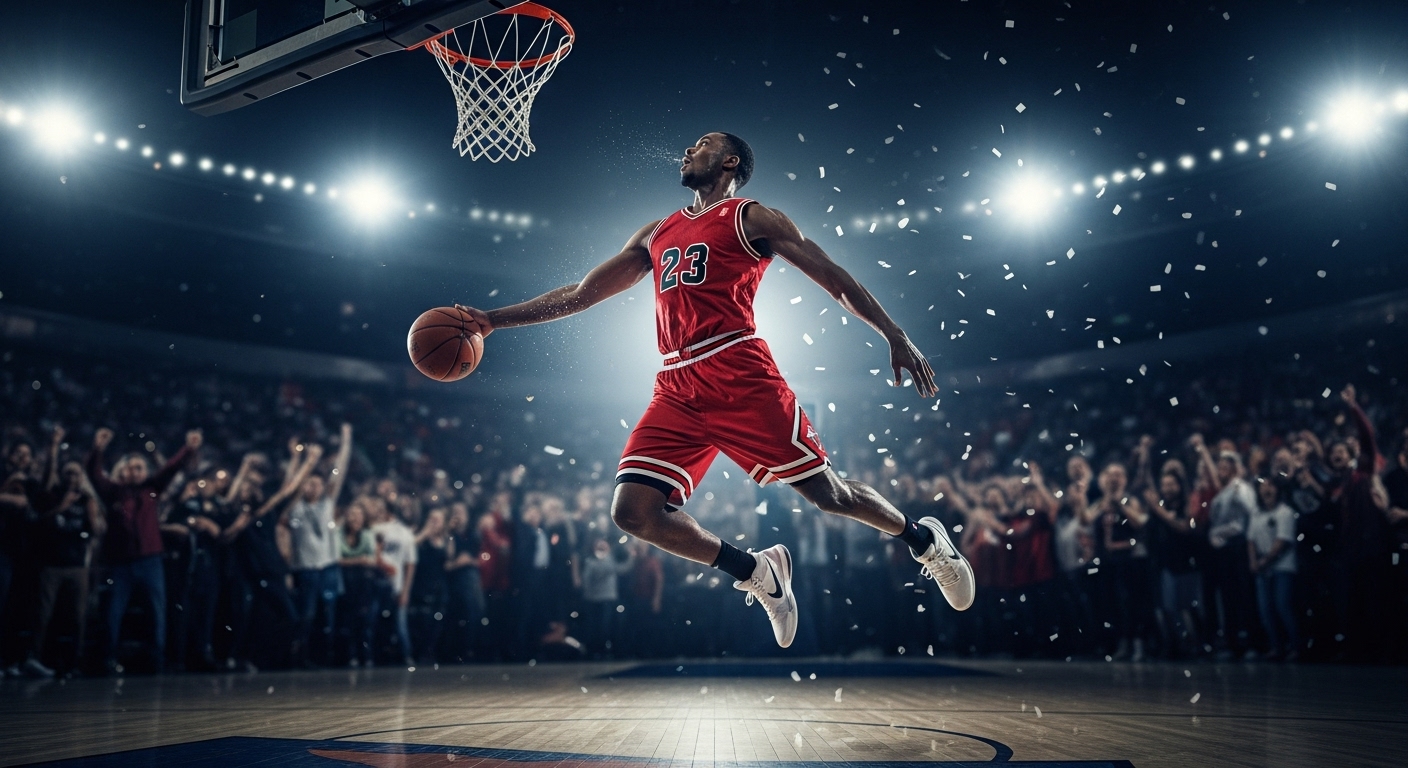Sports have long been a reflection of human culture, values, and the ever-changing landscape of technology and society. From the ancient Olympic Games to the fast-paced, data-driven competitions of today, the world of sports has evolved in remarkable ways. What began as a simple form of entertainment and physical challenge has grown into a multibillion-dollar industry that engages millions worldwide. As we look forward, the question is not only how sports have transformed, but how they will continue to evolve. In this post, we explore the evolution of sports, the role of technology in shaping modern athletics, and the future of athletic performance.
The Birth and Evolution of Sports
Early Beginnings: From Ancient Traditions to Modern Competitions
The origins of sports can be traced back to ancient civilizations. From the chariot races of Rome to the gladiatorial games, sports have always been deeply connected to the cultural and social practices of the time. The earliest forms of organized sports were often associated with religious rituals, military training, and social status.
In ancient Greece, for example, the Olympic Games were held every four years in honor of the gods. These games featured a variety of events, including running, wrestling, and chariot racing. Over time, these early competitions laid the foundation for the sports we know today. Similarly, ancient civilizations like Egypt, China, and Mesoamerica held various forms of physical contests that emphasized strength, skill, and endurance.
The evolution of sports into modern times was significantly influenced by the development of formalized rules, organizations, and structured competitions. During the 19th century, sports began to take on a more organized and institutionalized form. The establishment of governing bodies like the International Football Association (FA) in 1863 and the International Olympic Committee (IOC) in 1896 was pivotal in shaping the global structure of competitive sports. These organizations standardized rules and regulations, which allowed for the widespread growth of sports and their international recognition.
The Growth of Popular Sports: From Local Games to Global Phenomena
As sports evolved, so too did the nature of competition. What was once localized—played in small communities or among small groups of enthusiasts—became a global spectacle. Sports like soccer (football), basketball, and tennis became not just popular but part of global culture. Their growth was driven by increasing industrialization, which allowed for improved communication, transportation, and mass media.
In the 20th century, the media revolutionized sports by bringing them into homes around the world. The rise of television broadcasts, radio coverage, and eventually the internet allowed fans to follow their favorite athletes and teams regardless of geographic location. As sports became more accessible, they also became a source of entertainment, national pride, and identity.
With the rise of global leagues and international tournaments, sports became a way to bring nations together, from the FIFA World Cup in soccer to the Olympics, which unite athletes from every corner of the globe. This new level of exposure, combined with lucrative sponsorship deals and endorsements, helped sports grow into the financial powerhouses they are today.
The Role of Technology in Shaping Modern Sports
Enhancing Performance with Technology
The fusion of technology and sports is perhaps the most exciting development in the athletic world. With advancements in training, nutrition, recovery, and equipment, technology has become a critical factor in enhancing athletic performance. Today, athletes are pushing the boundaries of human capability, and technology is helping them do so.
Wearables and Fitness Tracking
One of the most significant technological innovations in recent years has been the development of wearable devices. These include fitness trackers, smartwatches, and specialized monitoring equipment that provide real-time data on an athlete’s performance, heart rate, sleep patterns, and other critical metrics. Wearables have revolutionized the way athletes train and recover by giving them precise insights into their physical condition and progress.
For example, a professional basketball player may use a wearable device that tracks their jump height, running speed, and stamina during a game or practice. With this data, coaches can identify areas for improvement and tailor training sessions to maximize performance. Similarly, wearables help athletes monitor their recovery, ensuring that they don’t overtrain and risk injury.
Biomechanics and Motion Analysis
Advanced biomechanics technology allows coaches and athletes to analyze movements with incredible precision. Through the use of high-speed cameras, motion sensors, and 3D analysis software, biomechanics experts can break down an athlete’s form in excruciating detail. This helps fine-tune techniques to reduce the risk of injury and improve efficiency.
For instance, sprinters may use motion-capture technology to analyze their running mechanics and optimize their stride. In baseball, pitchers use biomechanics tools to study their throwing motion, helping them perfect their pitches while preventing arm injuries.
Virtual Reality (VR) and Simulation Training
Virtual reality is increasingly being used as a tool for training and performance improvement. Through VR, athletes can simulate real-game scenarios, allowing them to practice their skills in a controlled, immersive environment. This technology helps improve decision-making, reaction time, and mental focus, especially in high-pressure situations.
For example, soccer players can use VR to practice their response to different defensive scenarios without the need for a live opponent. Similarly, quarterbacks in American football can use VR simulations to visualize plays and practice their throwing mechanics before stepping onto the field.
Sports Medicine and Injury Prevention
The risk of injury is always present in sports, but advances in sports medicine have helped mitigate these risks and improve recovery times. With the use of cutting-edge medical technology, athletes are able to recover faster and return to the field sooner after an injury.
Regenerative Medicine
Regenerative medicine, which includes treatments like stem cell therapy and platelet-rich plasma (PRP) injections, has revolutionized the way injuries are treated. These therapies help to regenerate damaged tissues, such as muscles, ligaments, and tendons, speeding up recovery and reducing the likelihood of long-term damage. Athletes in sports like football, soccer, and tennis have benefited significantly from these treatments, allowing them to extend their careers and return to peak performance more quickly.
Injury Prevention Technologies
In addition to aiding recovery, modern technologies have also made it possible to prevent injuries before they occur. Sensors embedded in athletic gear, such as helmets and shoes, can monitor the wearer’s movements and detect any signs of strain or unusual patterns that may lead to injury. In football, for example, helmets with embedded sensors can detect concussions by measuring the force and angle of impact. This data can then be used to assess an athlete’s risk of concussion and make informed decisions about their health.
The Future of Athletic Performance: What’s Next?
The Rise of AI and Data Analytics in Sports
Artificial intelligence (AI) and big data are poised to play an increasingly prominent role in sports in the coming years. AI-powered systems can analyze vast amounts of data, identifying patterns and making predictions that can guide training, strategy, and performance optimization.
Performance Analytics
Coaches and teams are already using AI to analyze performance data, assess team dynamics, and predict outcomes. By collecting and analyzing data from multiple sources—such as player movements, weather conditions, and opponent strategies—AI can help coaches make more informed decisions about game strategy, lineup choices, and player development.
Fan Experience and Engagement
AI is also transforming the fan experience. Through AI-driven recommendation algorithms, sports streaming services can suggest games and content tailored to individual tastes. Fans can also interact with their favorite teams and players through personalized chatbots, which provide real-time updates, stats, and insights.
Genetic Engineering and the Potential of Enhanced Athletes
As science continues to progress, the potential for genetic engineering in sports becomes a topic of increasing interest. Some scientists and ethicists are exploring the possibility of enhancing athletes’ genetic traits to improve performance. Whether it’s through gene editing or other biotechnological interventions, the idea of creating “super-athletes” raises questions about fairness, ethics, and the limits of human potential.
While gene editing is still in the early stages and faces significant ethical hurdles, it’s possible that in the future, genetic advancements may play a role in optimizing athletic performance. However, this raises concerns about the potential for abuse, cheating, and the unequal distribution of these technologies.
The Changing Landscape of Esports
While traditional sports continue to dominate the global sports scene, esports has emerged as a new frontier in competitive gaming. Esports involves professional video game players competing in organized tournaments for large cash prizes and sponsorship deals. Esports has already become a billion-dollar industry, attracting millions of fans and players worldwide.
The growth of esports presents new opportunities for young athletes, especially those who may not excel in traditional sports. As technology continues to advance, we can expect esports to become an even bigger part of the global sports ecosystem, with further integration of virtual reality, AI, and real-time data analytics.
Conclusion: The Endless Possibilities Ahead
The world of sports has come a long way since its humble beginnings, and the future is incredibly exciting. From the continued integration of technology in training and recovery to the rise of esports and AI-driven performance analytics, the next phase of athletic competition promises to be more dynamic, more data-driven, and more immersive than ever before.
However, with all these advancements, it’s crucial that we maintain a focus on the values that have always made sports so special—fairness, integrity, and the celebration of human potential. As technology continues to push the boundaries of what athletes can achieve, the question will be how to strike a balance between innovation and the fundamental principles of sport. The future of sports is unfolding before our eyes, and we’re just getting started.




